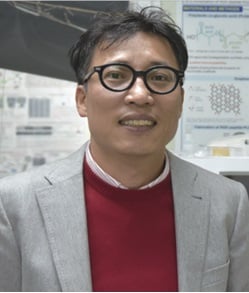Need Help?
28 November 2022
Bioengineering | Interview with Dr. Dong-Wook Han

Name: Dr. Dong-Wook Han
Email: [email protected]
Article: “Advanced Techniques for Skeletal Muscle Tissue Engineering and Regeneration”
We had the pleasure of speaking with Dr. Dong-Wook Han, author of the recently published paper "Advanced Techniques for Skeletal Muscle Tissue Engineering and Regeneration", to discuss the recent research trends in scaffold fabrication for skeletal muscle tissue regeneration using advanced techniques, such as electrospinning and 3D bioprinting.
Dr. Dong-Wook Han works as an Professor at the Department of Optics and Mechatronics Engineering, BK21+ Nano-Integrated Cogno-Mechatronics Engineering, College of Nanoscience & Nanotechnology, Pusan National University. We hope you enjoy the interview!
- Congratulations on your published paper. Can you give a bit of background about yourself and what your research areas are?
I obtained my Ph.D. degree in the graduate program of biomedical engineering from Yonsei University, Seoul, South Korea in 2004. After undertaking a postdoctoral fellowship at the Institute for Frontier Medical Sciences, Kyoto University, Japan for two and a half years, I joined the faculty of the Department of Optics and Mechatronics Engineering at Pusan National University. Since 2008, I have authored or co-authored over 180 scientific publications, possessed over 20 international and domestic patents, and joined several book chapters. My research interest concerns BT-NT convergence, especially tissue engineering and biomedical imaging with smart nanobiomaterials, development of artificial tissues, organs and medical devices by 3D printing, and assessment of nanomaterials toxicity (nanotoxicity).
- What made you decide to publish a bioengineering article? Why did you choose Bioengineering?
As a researcher in the field of biomedical engineering, I have been conducting tissue engineering research for the production of artificial structures that can replace various body parts such as bones, nerves, skin, and skeletal muscle based on diverse biomaterials for the past 20 years. To this end, it is essential to use advanced technologies such as electrospinning or 3D bioprinting to transform multifunctional nanobiomaterials into biocompatible and bioactive specific scaffolds. In recent years, I have been carrying out research with an emphasis on the creation of functional skeletal muscle. While I was thinking of writing a review paper to share and communicate with researchers in related fields about comparisons between other results and future prospects based on some experiences and know-how accumulated so far, I came across the introduction of the Special Issue of Bioengineering by chance, which led me to the decision to submit a paper here because I was convinced that it best suited my thoughts and intentions.
- What was your experience publishing with Bioengineering?
In a word, it was one of the best ever. Most journals and publishers operate their own characteristic submission system, but it is felt that the effectiveness of the system, although speed would be of great importance, depends on the accuracy of the review process, transparency, and the quality of review comments. In this respect, my experience publishing with Bioengineering is a so-called strong recommendation.
- Was it important to you that the journal is open access?
Whether a journal is open access or not is one of the most important factors when choosing a journal to submit my paper to. As mentioned above, review papers can be a valuable means to share many years of research experience and knowledge in a specific field with interested people as well as all researchers regardless of field, and open access is considered to be a basic prerequisite for this.
- What do you hope that readers will get from your paper?
The subject matter of my review paper dealt with advanced techniques such as electrospinning and 3D bioprinting using different types of polymers for skeletal muscle tissue engineering and regeneration. If relevant or interested researchers read my paper, I hope that it will be of some help in understanding the state-of-the-art research trend in various technology for skeletal muscle tissue engineering as well as in setting the direction of research or obtaining necessary ideas for your research.

